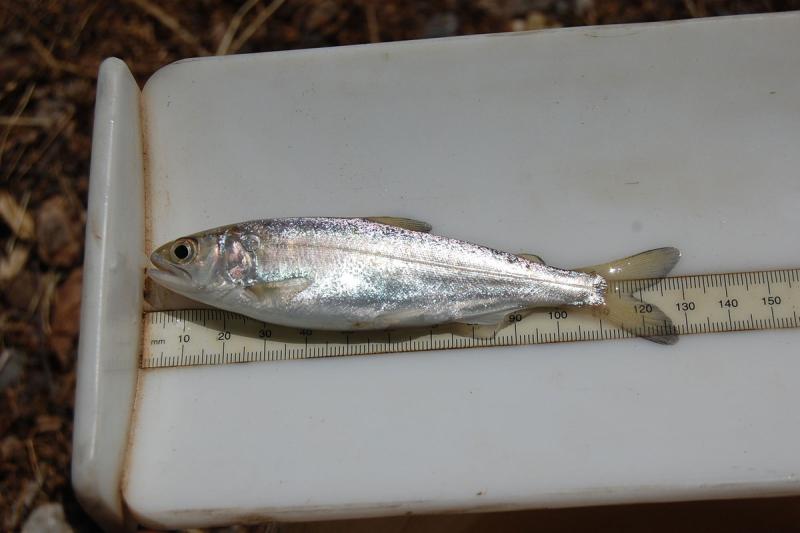 NOAA Fisheries recovery goals include reintroduction to save the late-migrating fish
NOAA Fisheries recovery goals include reintroduction to save the late-migrating fish
From NOAA Fisheries:
In drought years and when marine heat waves warm the Pacific Ocean, late-migrating juvenile spring-run Chinook salmon of California’s Central Valley are the ultimate survivors. They are among the few salmon that return to spawning rivers in those difficult years to keep their populations alive. This is according to results published today inNature Climate Change.
The trouble is that this late-migrating behavior hangs on only in a few rivers where water temperatures remain cool enough for the fish to survive the summer. Today, this habitat is primarily found above barrier dams. Those fish that spend a year in their home streams as juveniles leave in the fall. They arrive in the ocean larger and more likely to survive their 1–3 years at sea.
Scientists examined the ear bones of salmon, called otoliths. These bones incorporate the distinctive isotope ratios of different Central Valley Rivers and the ocean as they grow sequential layers. They looked at Chinook salmon from two tributaries of the Sacramento River without dams that begin beneath Lassen Peak, north of Sacramento. Late-migrating juveniles from Mill Creek and Deer Creek returned from the ocean at much higher rates than more abundant juveniles that leave for the ocean earlier in the spring.
Continue reading this article at NOAA Fisheries.



